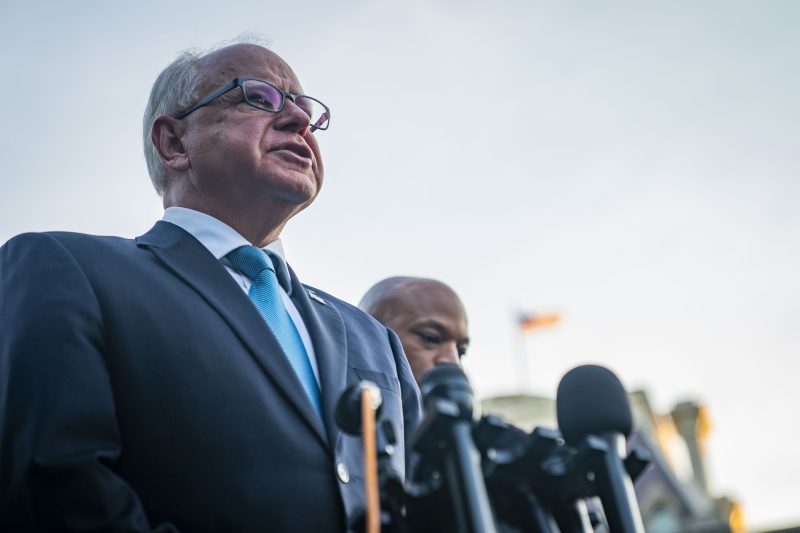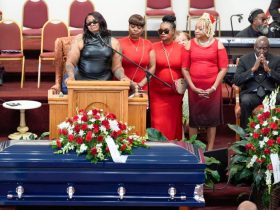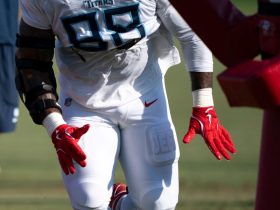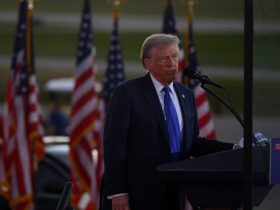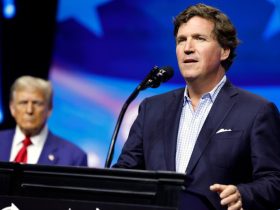Vice President Harris on Tuesday announced that Minnesota Gov. Tim Walz (D) will be her running mate in the 2024 election, at long last solidifying the two major-party presidential tickets with just three months to go.
Harris chose Walz over contenders including Pennsylvania Gov. Josh Shapiro (D) and Sen. Mark Kelly (D-Ariz.) in an abbreviated process, following President Biden’s decision two weeks ago to drop out of his reelection race.
The election will now pit the Harris-Walz ticket against the Republican ticket of former president Donald Trump and Sen. JD Vance (R-Ohio), along with a smattering of independent candidates that includes Robert F. Kennedy Jr.
Below, some takeaways on the choice.
1. Harris went for broad appeal over swing-state appeal
Speculation about vice-presidential selections often focuses too much on winning a specific swing state. And that was surely the case here.
Harris had an unusual array of seemingly good options with strong electoral records in more important states, including Shapiro, Kelly and North Carolina Gov. Roy Cooper (D). She instead went with someone from a somewhat competitive state who will ideally appeal more broadly to middle America, White working-class voters and even rural voters.
(Minnesota has the longest current streak of voting for Democratic presidential candidates, with the caveat that it was the only state to vote Democratic in 1984, when home-stater Walter Mondale was the Democratic nominee.)
Some of the other candidates could have provided some of that broad appeal, too, and helped balance out a ticket with the former senator from California who staked out some pretty liberal ground in her 2020 Democratic presidential primary campaign. But none of them demonstrated the kind of folksy appeal that Walz has in recent weeks, as the candidates engaged in what was for all intents and purposes a sprint of an audition process.
Walz’s background also rivals that of the former NASA astronaut Kelly for its potential appeal: Walz is a military veteran and gun owner (he once received the backing of the National Rifle Association) from a small town who spent two decades as a high school teacher before entering politics. He also won a state title as a high school football coach.
In his first campaign for Congress in 2006, Walz won a southern Minnesota district that George W. Bush had carried two years before.
2. A ‘weird’ and viral audition
The unusual audition process seemed to play to Walz’s strengths. While Transportation Secretary Pete Buttigieg — another contender — has long distinguished himself as one of the party’s most gifted messengers, Walz’s blitz of media appearances quickly gained him prominence and a following among Democrats on social media and elsewhere.
That turned him from someone few people were talking about just two weeks ago into a front-runner and now the nominee.
Perhaps the most striking aspect of Walz’s rise is how he seemed to almost spontaneously spur the most popular Democratic talking point of the moment: that the GOP ticket is “weird.” Walz invoked that word on MSNBC’s “Morning Joe” on July 23, and it’s been a mainstay ever since.
Whether that attack sticks is an open question, but Democrats could certainly do worse than to select someone who in his brief time on the national stage has gotten such a strong reception.
3. A blend of folksiness with a recent left-leaning record
While Walz got his start as a red-district Democrat and speaks the language of swing voters, his record as governor has trended toward progressive policies. Minnesota Democrats have had a remarkable level of success in passing such policies lately, despite their narrow legislative majorities.
That gives the left more to grab hold of with his selection than it would have with some of the others. But it could also help Republicans paint the Democratic ticket as too far left.
Among the key parts of Walz’s record as governor: universal school lunches, universal gun background checks and a “red flag” law, enshrining abortion rights into state law, protecting rights to gender-affirming care, restoring the rights of convicted felons to vote, legalizing recreational marijuana, and allowing undocumented Minnesotans to apply for driver’s licenses.
Beyond those policies, Republicans are likely to focus on the riots in Minnesota after George Floyd’s murder (Walz was criticized for not deploying the National Guard more immediately) and Walz’s pandemic restrictions, which included a mask mandate that he fought to maintain in court.
Democrats believe that many of these policies earn broad appeal and can be sold to a national electorate. But this will be a key subplot of Walz’s selection; a poll conducted last week showed 44 percent of Americans regard Harris as “very liberal,” compared to 37 percent who said Trump was “very conservative.”
4. Walz’s electoral record tops Vance’s
While Shapiro and Cooper had the most impressive electoral records — and Kelly has won a swing state twice in the last four years — Walz has some attributes to point to.
He won the governorship by 12 points in 2018 in a good election for Democrats, two years after then-Democratic presidential nominee Hillary Clinton won the state by just 1.5 points. And in his 2022 reelection race, with Democrats facing tougher winds, he matched Biden’s seven-point victory from two years earlier.
Walz did better in the rural areas of the state in his 2018 race, while he relied more on the Twin Cities and areas around Duluth, Fargo-Moorhead and Rochester in 2022. He still carried some counties he had represented in southern Minnesota.
But perhaps the more optimistic case for Walz is how he did before that — in his campaigns for Congress.
He was first elected in 2006 in a southern Minnesota district that then-Democratic presidential nominee John F. Kerry had lost by four points, carrying the district by seven. By 2016, Walz narrowly won reelection even as Trump was carrying the district by 15 points.
Harris has at the very least picked a running mate with a better electoral record than Trump’s running mate. Vance won his Senate seat in 2022, but he underperformed every other major statewide Republican in Ohio — often by a lot. Walz, by contrast, has generally overperformed his party’s expected share of the vote.
For now, Walz is little-known on the national stage. A Marist College poll released Tuesday morning showed 17 percent of registered voters viewed him favorably, 13 percent viewed him unfavorably, and 70 percent offered no opinion.
5. Notable tidbits about Walz’s selection
There are a few other ways in which Walz stands out as a VP pick:
He would be just the fourth governor to ascend to that role since the Great Depression.
He’s the first Democratic VP pick since 1964 who didn’t go to law school.
It’s the second consecutive Democratic ticket (after Biden-Harris in 2020) to not feature anyone with an Ivy League degree — which hadn’t happened since 1984. (Walz attended little-known Chadron State College in Nebraska and got his master’s degree from Minnesota State University at Mankato. Harris attended Howard University and got her law degree from the University of California in San Francisco.) Trump and Vance are both Ivy League-educated.
Were Walz to be elected, Minnesota will have provided three of the 13 most recent vice presidents — after Hubert Humphrey and Mondale.

